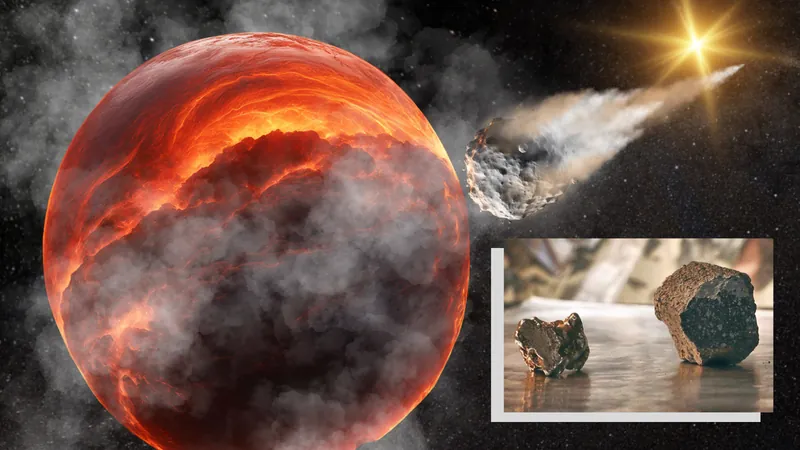
Groundbreaking Discovery: Did Life’s Building Blocks Really Come from Space?
2024-10-11
Author: Jessica Wong
Introduction
Recent research has sent shockwaves through the scientific community by suggesting that the essential ingredients for life on Earth were delivered from space by meteorites. This revelation not only reshapes our understanding of how life emerged on our home planet but may also hold the key to searching for extraterrestrial life.
The Theory
The theory posits that these meteorites originated from ancient "unmelted asteroids," which are small rocky bodies that played a crucial role in the formation of the solar system, including Earth itself. Formed approximately 4.6 billion years ago from a swirling disk of dust and gas around the nascent sun, these planetesimals coalesced into the rocky planets we know today.
Zinc Research
A significant focus of the research has been a chemical element called zinc, with scientists tracking its presence in meteorites to unravel the mystery of Earth's "volatiles." These volatiles include elements and compounds that can vaporize at low temperatures and are critically important for life—most notably, water.
“Understanding the origin of these vital materials is fundamental to our quest for knowledge about life's beginnings on Earth and potentially elsewhere in the universe,” stated Dr. Rayssa Martins, the lead researcher from the University of Cambridge. The research team's findings suggest that our planet’s zinc has a diverse origin, with about half coming from the inner solar system and the other half from the outer regions, possibly beyond Jupiter.
Radiation Effects on Planetesimals
Intriguingly, the researchers discovered that not all planetesimals are created equal. Those formed in the solar system's earliest eras were often subjected to intense radiation from the young sun, causing them to melt and lose many of their volatiles. Conversely, later planetesimals, which avoided such high radiation doses, retained more of their chemically vital components.
Key Findings
By analyzing zinc across a wide variety of meteorites, the team unveiled that while melted planetesimals contributed to around 70% of Earth's mass, they provided only about 10% of its zinc. This implies that the majority—about 90%—of Earth's zinc, along with potentially life-sustaining volatiles, likely originated from unmelted asteroids.
“Our findings imply that the proximity of a planet to its star is crucial for maintaining the conditions necessary for liquid water,” Martins said. “However, it’s equally essential that planets receive the right materials to ensure an abundance of volatile compounds.”
Implications for Astrobiology
What’s particularly exciting is that these processes might not be unique to our solar system. Similar conditions may exist in other young planetary systems, broadening the horizons for astrobiologists in their quest to find habitable planets across the cosmos.
Conclusion
As we continue to explore the final frontier, this groundbreaking research not only enhances our understanding of Earth's origins but also guides future missions to identify potential life-sustaining planets. Could this new evidence be the clue scientists need to discover life beyond our world? Only time will tell!



 Brasil (PT)
Brasil (PT)
 Canada (EN)
Canada (EN)
 Chile (ES)
Chile (ES)
 España (ES)
España (ES)
 France (FR)
France (FR)
 Hong Kong (EN)
Hong Kong (EN)
 Italia (IT)
Italia (IT)
 日本 (JA)
日本 (JA)
 Magyarország (HU)
Magyarország (HU)
 Norge (NO)
Norge (NO)
 Polska (PL)
Polska (PL)
 Schweiz (DE)
Schweiz (DE)
 Singapore (EN)
Singapore (EN)
 Sverige (SV)
Sverige (SV)
 Suomi (FI)
Suomi (FI)
 Türkiye (TR)
Türkiye (TR)